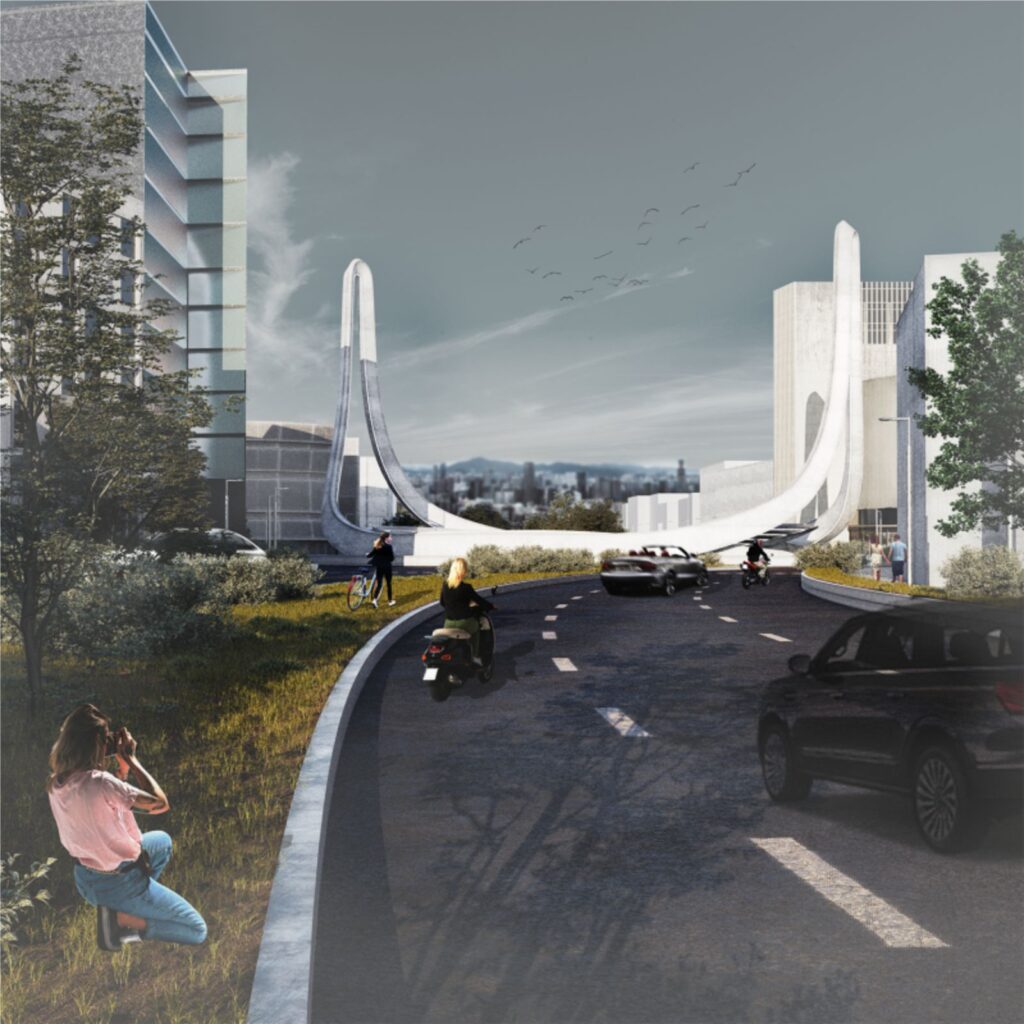Habibeh Madjdabadi wins competition for Vali-Asr square in Tehran

Recently Vali-Asr has gained international notability after being mentioned in the viral revolutionary song Baraye. The Iranian female architect Habibeh Madjdabadi’s winning proposal is an integral and organic solution at different scales. The project aims to redefine the concept of the existing square and give it a new connotation that refers to the idea of the Persian historical squares.
Vali-Asr square, typologically a roundabout, is the most important traffic node on the longest street in the Middle East (17.9 km), connecting the railway station in the south to the base of the mountains to the north (1615 above sea level). The emergence of Vali-Asr Avenue indicates modernism’s start in Iranian urban planning and architecture.
With its 18000 plane trees planted at equal intervals on both sides of the avenue and a series of green spaces originally flanked the pavements, it was supposed to refer to the ancient concept of the Persian Garden. Tehran is paradoxically a megapolis with few outstanding architectural or sculptural objects.
Iranian architecture has valued empty spaces and voids since ancient times. In Iran, “emptiness” does not mean the absence of presence but rather a spiritual presence that can be felt through geometry and symmetry. Iranian urban textures are dense and continuous.
Buildings are incorporated into the urban fabric without external façades, and the building masses are organized around the voids of the courtyards. A typical Persian square, meidan, is not just an open urban space between several independent buildings.
It has a different and broader connotation. Architecturally, it should possess its own well-defined boundary and be absent of any architectural or sculptural element in the middle. From a literal point of view, the term meidan has multiple contextual meanings: circumscribed land; area of land containing; particular natural property; or area in which a particular force has some effect.
The same term figuratively means a place where somebody appears for a critical mission and a place where a battle or sports rivalry happens. Paradoxically, in this case, Vali-Asr was a meidan in concept but a roundabout in shape. In such circumstances, the priority was to allow Vali-Asr square to become physically a square par excellence.
As an architect and artist, I realized that the project has three different scales: urban design, architecture, and sculpture. So, instead of imagining an object to be put in the center of the roundabout, the project started by considering how the new square could valorize the pre-existing urban phenomena, such as the axis of Vali-Asr Avenue with its converging lined trees and the transportation infrastructures.
Secondly, we focused on the organization of the heterogenous space of the square, surrounded by different sizes and shapes of buildings, and the subway terminal in the center. In Iranian cities, meidans have always been suitable for hosting any social and cultural events.
In the proposed plan, the circular court surrounded by concentric round gradients and a well-defined boundary wall forms a suitable arena for holding all kinds of events. The arena and the sweet ramps connecting the different levels of the square are integral parts of the emerging landmark that the architect designed when focusing on the sculptural scale of the project.
The landmark does not stand in the middle; instead, with its curvy movement, it runs around the arena to valorize the central void. This sculptural form has two symmetrical peaks emphasizing and framing the axis of the uphill Vali-Asr Avenue with its bending trees and pointing to the mountains in the background.
The exact form descends to the ground and goes up to the opposite side, becoming horizontal in correspondence with the flat crossing street. The symmetry here was not meant to be perceived by the people moving around the roundabout. Vice versa, it was planned to allow many perspectives with the surrounding buildings in the background. Source by Kamran Afshar Naderi.
West SectionLocation: Tehran, Iran
Architect: Habibeh Madjdabadi
Design Team: Hossein Bashari, Negar Asadimehr, Rashed Fatehi, Shirin Afshar, Tarranom Maveddat
Year: 2023
Images: Courtesy of Habibeh Madjdabadi
DiagramExploded axonometricSection





